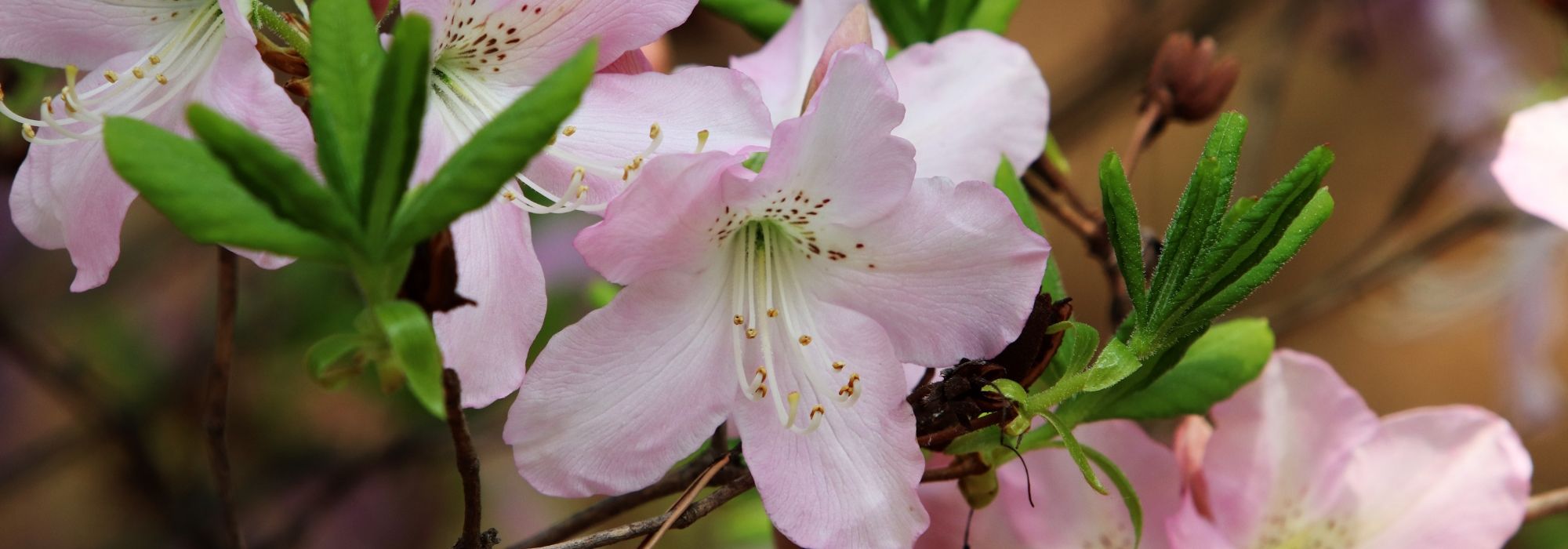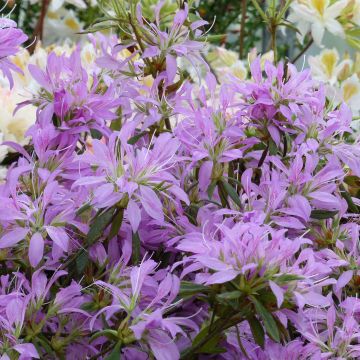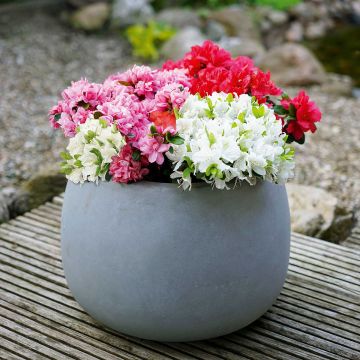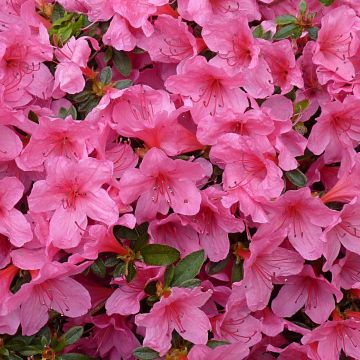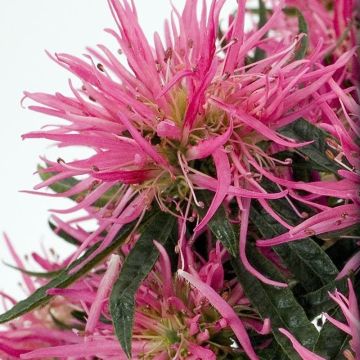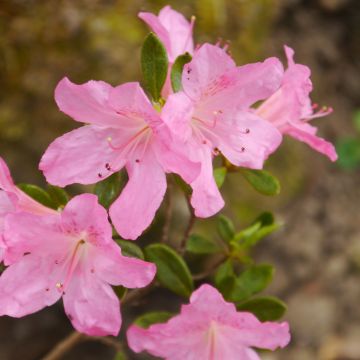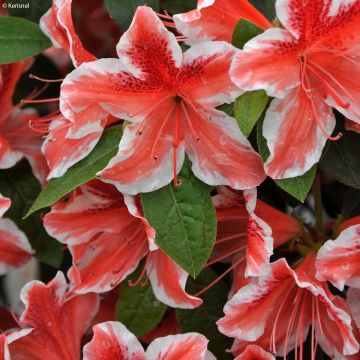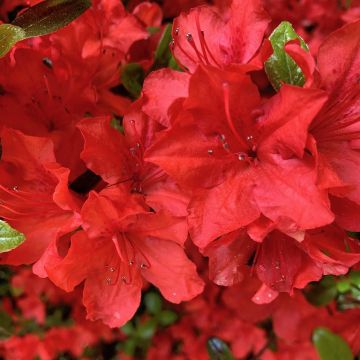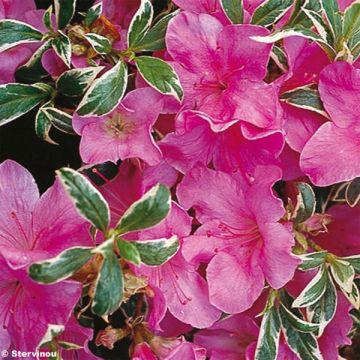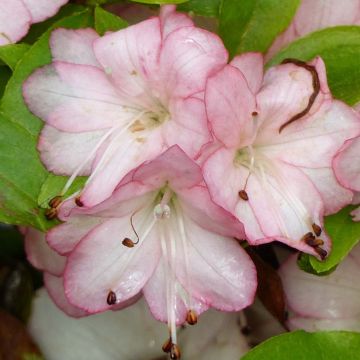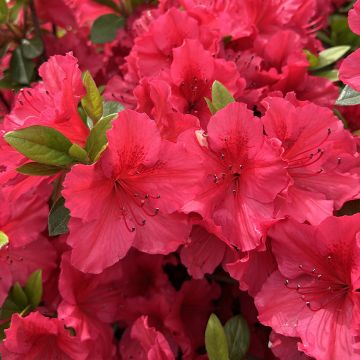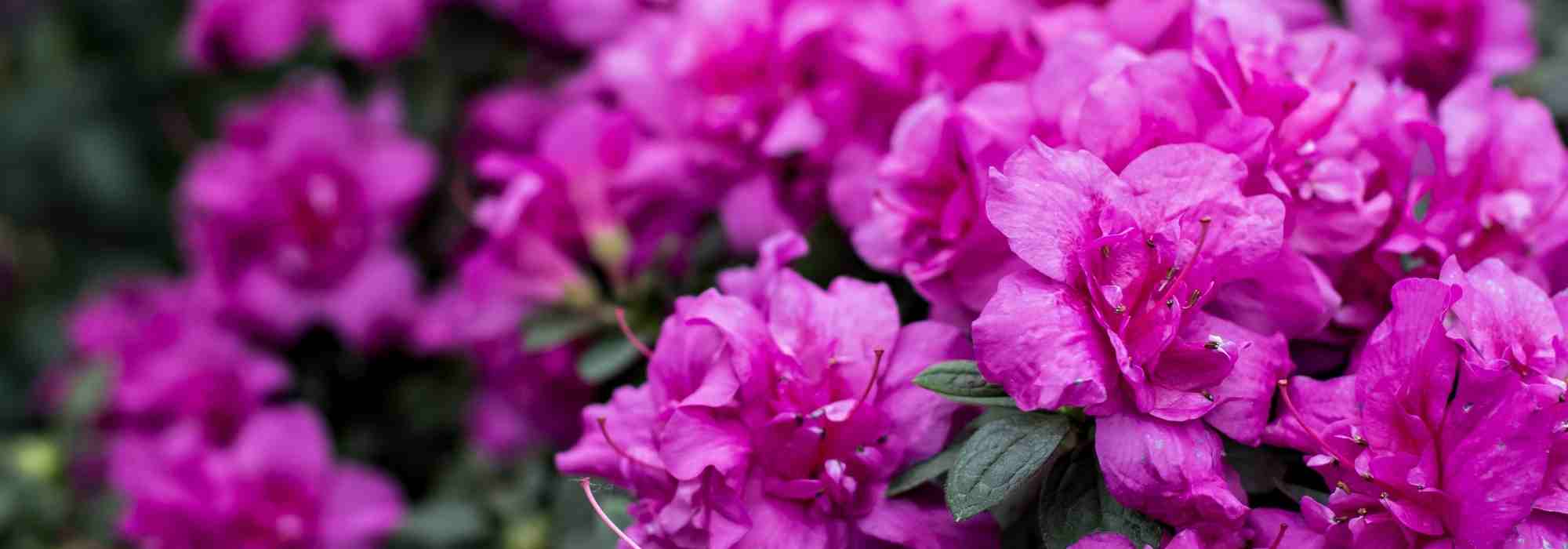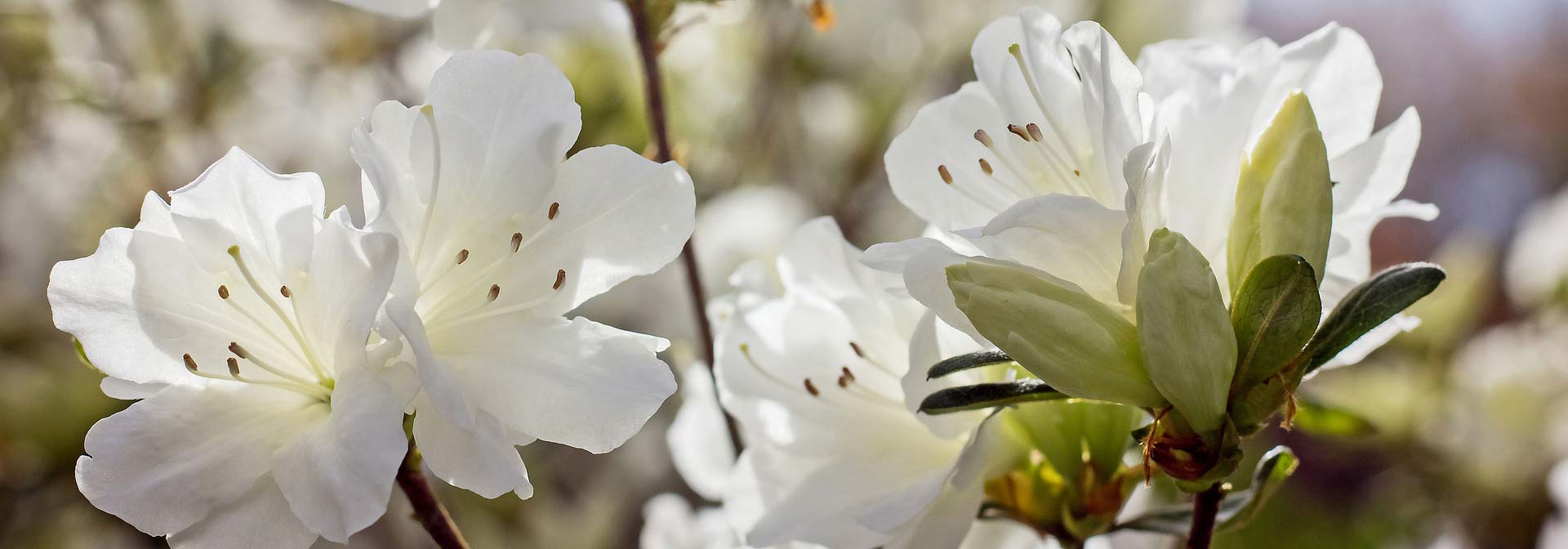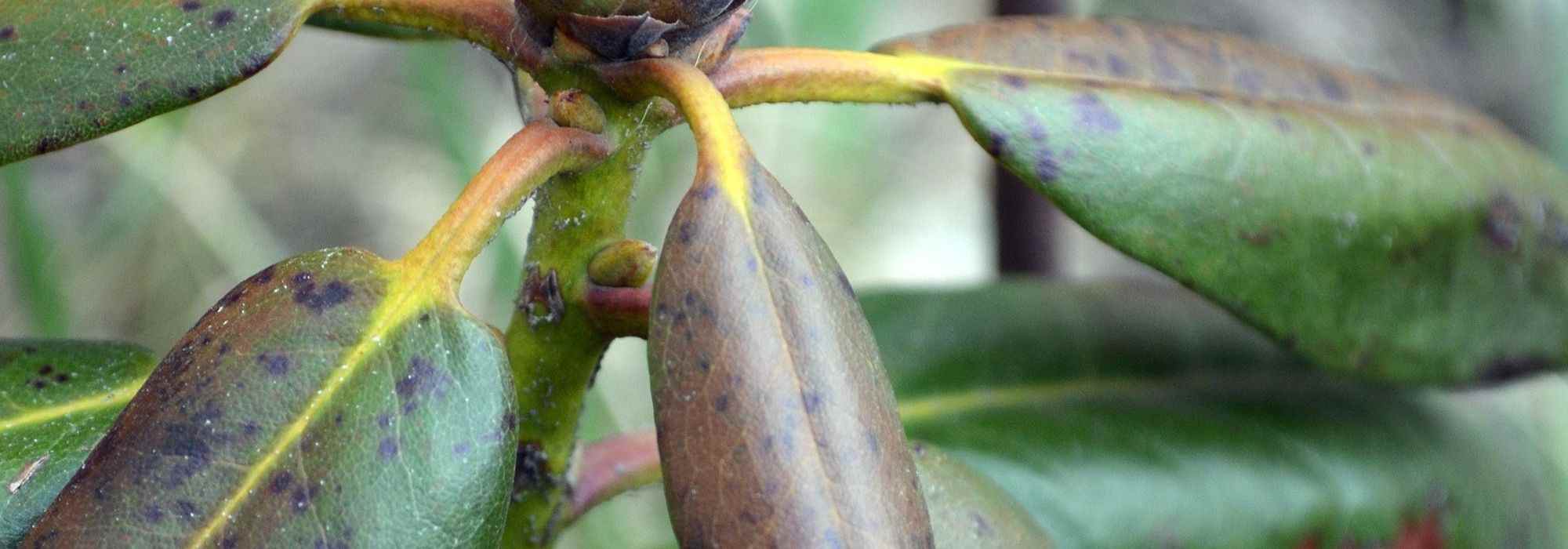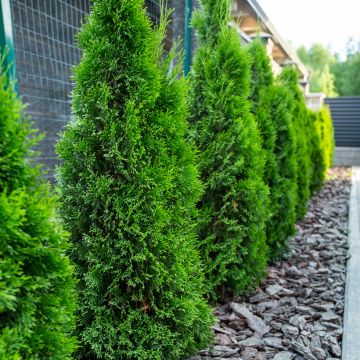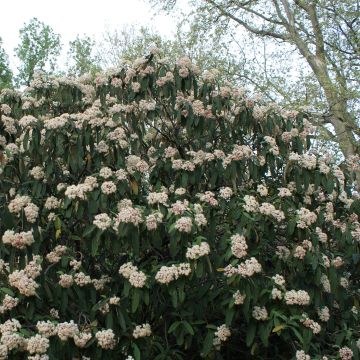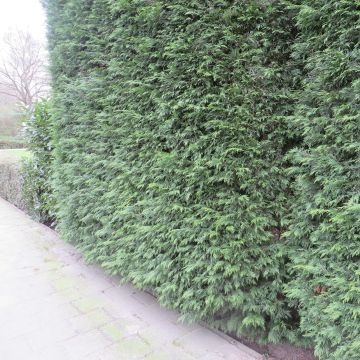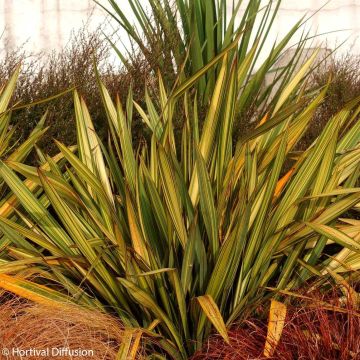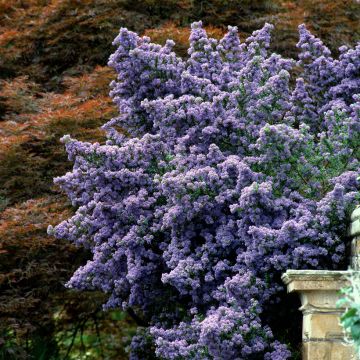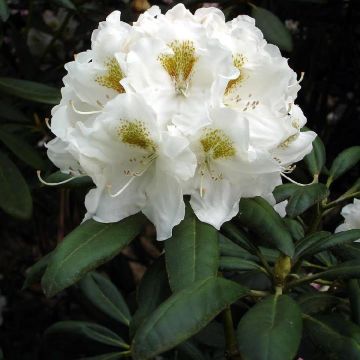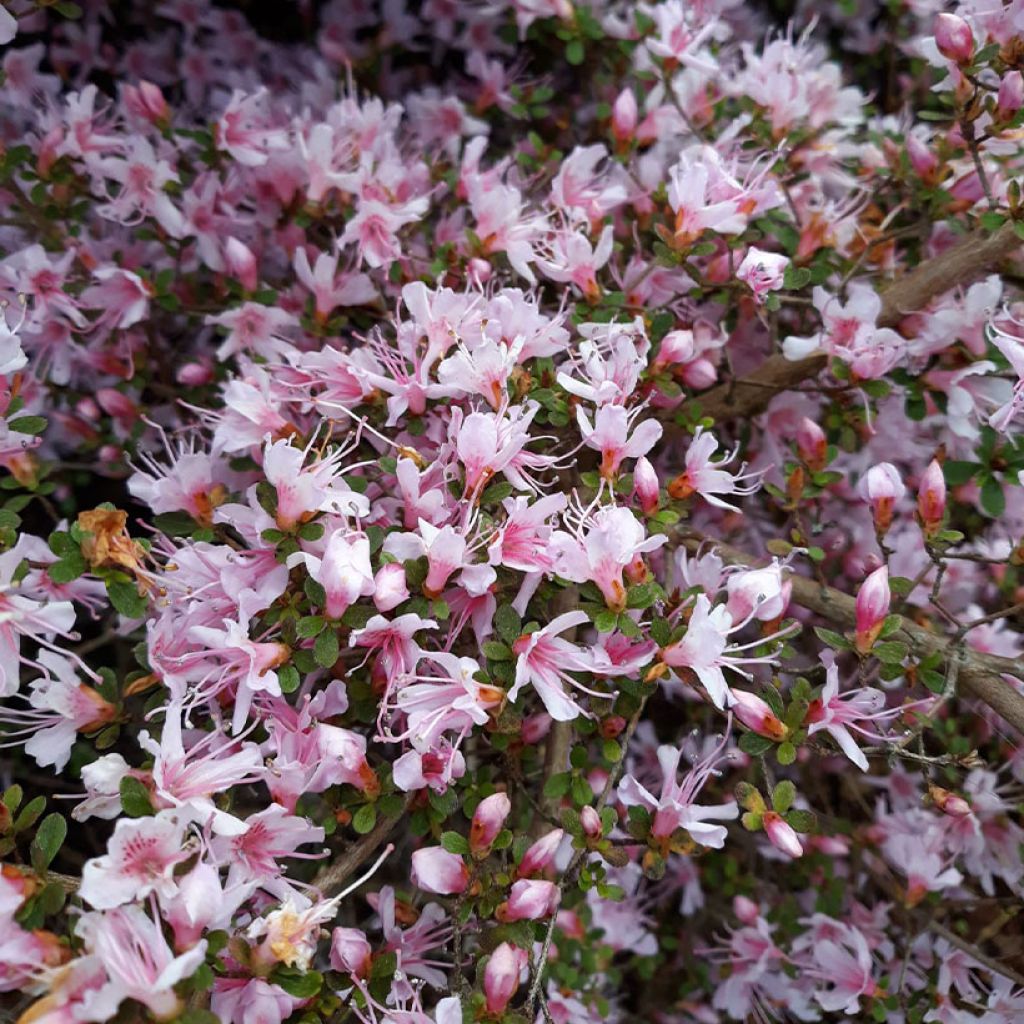

Rhododendron serpyllifolium - Thyme-leaved Azalea
Rhododendron serpyllifolium - Thyme-leaved Azalea
Rhododendron (Azalea) serpyllifolium
Thyme-leaved Azalea, Thyme-leaved Rhododendron
Special offer!
Receive a €20 voucher for any order over €90 (excluding delivery costs, credit notes, and plastic-free options)!
1- Add your favorite plants to your cart.
2- Once you have reached €90, confirm your order (you can even choose the delivery date!).
3- As soon as your order is shipped, you will receive an email containing your voucher code, valid for 3 months (90 days).
Your voucher is unique and can only be used once, for any order with a minimum value of €20, excluding delivery costs.
Can be combined with other current offers, non-divisible and non-refundable.
Home or relay delivery (depending on size and destination)
Schedule delivery date,
and select date in basket
This plant carries a 24 months recovery warranty
More information
We guarantee the quality of our plants for a full growing cycle, and will replace at our expense any plant that fails to recover under normal climatic and planting conditions.
Would this plant suit my garden?
Set up your Plantfit profile →
Description
Rhododendron or Azalea serpyllifolium is a rare botanical Azalea native to Japan, very interesting from an ornamental perspective. It is probably the species that bears the smallest leaves, resembling those of Wild Thyme (Thymus serpyllum), hence its species name, literally "with thyme-like leaves". In spring, it produces an abundance of charming small flowers in a lilac pink. This dwarf bush thrives in partial shade, in moist, humus-bearing soil with a tendency towards acidity, and appreciates mildness and atmospheric humidity. It will be perfect in a small Japanese garden or a natural-looking garden.
The Azalea, which in botanical terms is actually a Rhododendron, belongs to the family Ericaceae, which houses many favourite genera for garden lovers, such as Leucothoe, Kalmia, Heathers, and even some plants with edible fruits (blueberry, strawberry tree, bilberry...). The Rhododendron genus comprises over 1000 species, ranging from dwarf shrubs 10 or 20 cm high to small trees 10 to 15 m tall, from cold and temperate regions to the tropics. This group of plants is so vast that it is subject to a rather complex botanical classification. Rhododendron serpyllifolium belongs to the section Tsutsusi, whose members are characterised by producing larger spring leaves that are deciduous, and smaller summer leaves that persist until the end of winter, and sometimes even visually uniform and evergreen leaves.
Azalea serphyllifolium is endemic to Japan, where it grows naturally in the southern half of Honshu Island (the large central island of the archipelago that houses Tokyo), as well as on the two southern islands, Shikoku and Kyushu. The species was introduced to England by Charles Marie in 1880, where it first bloomed in 1882. Semi-evergreen depending on the climate, this rather slow-growing Azalea forms a compact shrub 50 cm in all directions within 10 years of planting. At maturity, it will reach a maximum height of 0.80 m, or up to 1 m, if it enjoys its location. It is quite hardy (-15°C to -20°C), but it prefers mild and even warm climates, and especially humid conditions. The species is remarkable for the small size of its leaves: slightly obovate and narrow, only 5 to 20 mm long and 3 to 6 mm wide. Growing alternately on the branches, they are medium green to dark green with small hairs along the edges. The dark brown stems themselves are covered with small hairs, laid against the stem and directed towards the tip of the shoot.
In April-May, the shrub produces a beautiful, particularly abundant and graceful flowering. Small flowers, most often solitary or grouped in pairs, bloom at the ends of short branches. They consist of a funnel-shaped corolla, spreading at the top and tubular at the base. The five well-opened petals reveal five long stamens that contribute to the grace of the flower. The flowering is generally lilac pink, but there are forms with white flowers, which have been described and classified as a subspecies.
Rhododendron serpyllifolium, with its romantic charm, is a very original botanical species that will fit perfectly into a Japanese-style garden. It will pair beautifully with a Japanese Maple such as Acer palmatum 'Orange Dream', whose palmate leaf patterns will not overshadow its tiny thyme-like leaves, while their changing colours in shades of yellow, orange, and light green will create a pleasant contrast. Magnolia stellata with its immaculate star-shaped flowers will also be a good companion. Also consider perennials, such as Hostas whose large decorative leaves will make your small Azalea's leaves appear even finer by comparison.
Rhododendron serpyllifolium - Thyme-leaved Azalea in pictures
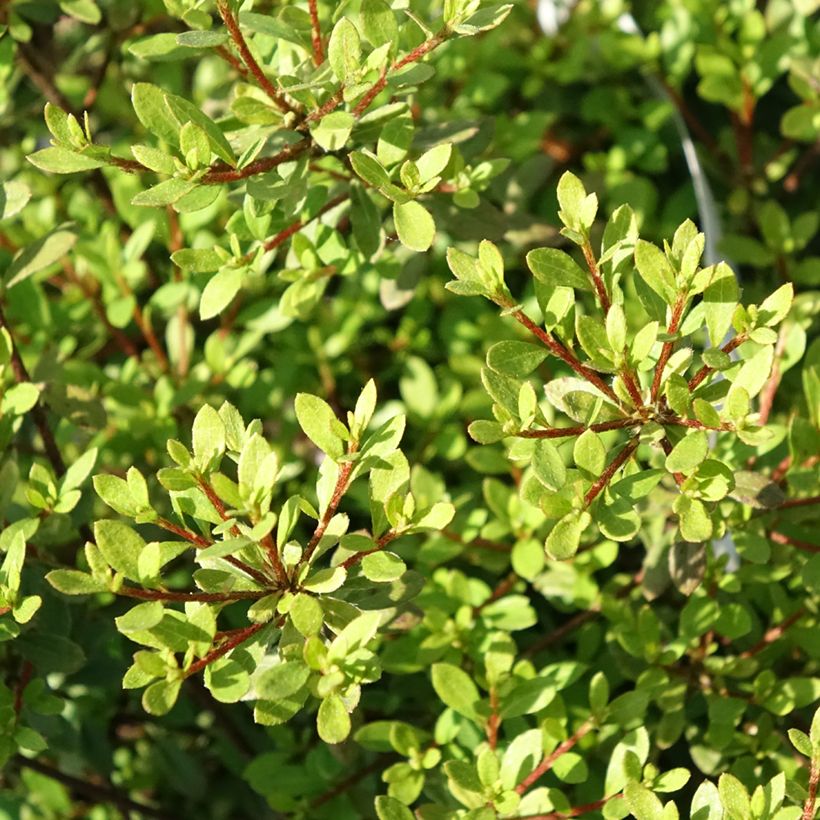

Plant habit
Flowering
Foliage
Botanical data
Rhododendron (Azalea)
serpyllifolium
Ericaceae
Thyme-leaved Azalea, Thyme-leaved Rhododendron
Azalea serpyllifolia
East Asia
Other Japanese Azalea
View all →Planting and care
Rhododendron or Azalea serpyllifolium, due to its geographical origin, thrives in mild and even warm, humid climates. The south may be a bit too dry for it, and the east a bit too cold. In these areas, it is better to cultivate it in a pot under the shade of other plants, and in the east, to bring it indoors to a bright room during winter.
In the garden, choose a semi-shaded location, at the edge of trees or large bushes, to provide a bit of atmospheric humidity that it appreciates. Soak the root ball for a quarter of an hour in a bucket of non-calcareous water before planting to thoroughly moisten it. Meanwhile, dig a hole 50 cm wide and deep and mix slightly acidic planting compost (pH 6-6.5) and ericaceous soil with the existing soil. If your soil is calcareous, plant it in a pot, as even enriching the soil this way will make it difficult to cultivate. Position the root ball in the planting hole, backfill around it and water generously. Monitor the watering and provide additional water during hot weather to prevent the soil from drying out. Stop watering during autumn rains and in winter.
This bush requires no pruning; allow it to maintain its natural spontaneous shape, which gives it charm.
Planting period
Intended location
Care
Planting & care advice
This item has not been reviewed yet - be the first to leave a review about it.
Similar products
Haven't found what you were looking for?
Hardiness is the lowest winter temperature a plant can endure without suffering serious damage or even dying. However, hardiness is affected by location (a sheltered area, such as a patio), protection (winter cover) and soil type (hardiness is improved by well-drained soil).

Photo Sharing Terms & Conditions
In order to encourage gardeners to interact and share their experiences, Promesse de fleurs offers various media enabling content to be uploaded onto its Site - in particular via the ‘Photo sharing’ module.
The User agrees to refrain from:
- Posting any content that is illegal, prejudicial, insulting, racist, inciteful to hatred, revisionist, contrary to public decency, that infringes on privacy or on the privacy rights of third parties, in particular the publicity rights of persons and goods, intellectual property rights, or the right to privacy.
- Submitting content on behalf of a third party;
- Impersonate the identity of a third party and/or publish any personal information about a third party;
In general, the User undertakes to refrain from any unethical behaviour.
All Content (in particular text, comments, files, images, photos, videos, creative works, etc.), which may be subject to property or intellectual property rights, image or other private rights, shall remain the property of the User, subject to the limited rights granted by the terms of the licence granted by Promesse de fleurs as stated below. Users are at liberty to publish or not to publish such Content on the Site, notably via the ‘Photo Sharing’ facility, and accept that this Content shall be made public and freely accessible, notably on the Internet.
Users further acknowledge, undertake to have ,and guarantee that they hold all necessary rights and permissions to publish such material on the Site, in particular with regard to the legislation in force pertaining to any privacy, property, intellectual property, image, or contractual rights, or rights of any other nature. By publishing such Content on the Site, Users acknowledge accepting full liability as publishers of the Content within the meaning of the law, and grant Promesse de fleurs, free of charge, an inclusive, worldwide licence for the said Content for the entire duration of its publication, including all reproduction, representation, up/downloading, displaying, performing, transmission, and storage rights.
Users also grant permission for their name to be linked to the Content and accept that this link may not always be made available.
By engaging in posting material, Users consent to their Content becoming automatically accessible on the Internet, in particular on other sites and/or blogs and/or web pages of the Promesse de fleurs site, including in particular social pages and the Promesse de fleurs catalogue.
Users may secure the removal of entrusted content free of charge by issuing a simple request via our contact form.
The flowering period indicated on our website applies to countries and regions located in USDA zone 8 (France, the United Kingdom, Ireland, the Netherlands, etc.)
It will vary according to where you live:
- In zones 9 to 10 (Italy, Spain, Greece, etc.), flowering will occur about 2 to 4 weeks earlier.
- In zones 6 to 7 (Germany, Poland, Slovenia, and lower mountainous regions), flowering will be delayed by 2 to 3 weeks.
- In zone 5 (Central Europe, Scandinavia), blooming will be delayed by 3 to 5 weeks.
In temperate climates, pruning of spring-flowering shrubs (forsythia, spireas, etc.) should be done just after flowering.
Pruning of summer-flowering shrubs (Indian Lilac, Perovskia, etc.) can be done in winter or spring.
In cold regions as well as with frost-sensitive plants, avoid pruning too early when severe frosts may still occur.
The planting period indicated on our website applies to countries and regions located in USDA zone 8 (France, United Kingdom, Ireland, Netherlands).
It will vary according to where you live:
- In Mediterranean zones (Marseille, Madrid, Milan, etc.), autumn and winter are the best planting periods.
- In continental zones (Strasbourg, Munich, Vienna, etc.), delay planting by 2 to 3 weeks in spring and bring it forward by 2 to 4 weeks in autumn.
- In mountainous regions (the Alps, Pyrenees, Carpathians, etc.), it is best to plant in late spring (May-June) or late summer (August-September).
The harvesting period indicated on our website applies to countries and regions in USDA zone 8 (France, England, Ireland, the Netherlands).
In colder areas (Scandinavia, Poland, Austria...) fruit and vegetable harvests are likely to be delayed by 3-4 weeks.
In warmer areas (Italy, Spain, Greece, etc.), harvesting will probably take place earlier, depending on weather conditions.
The sowing periods indicated on our website apply to countries and regions within USDA Zone 8 (France, UK, Ireland, Netherlands).
In colder areas (Scandinavia, Poland, Austria...), delay any outdoor sowing by 3-4 weeks, or sow under glass.
In warmer climes (Italy, Spain, Greece, etc.), bring outdoor sowing forward by a few weeks.






























